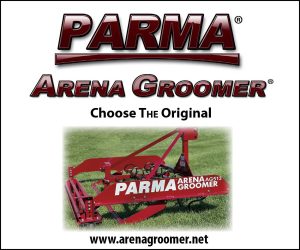Financial Planning for Equine Professionals
by Jeff Kauffman, Investment Advisor

Are you a small business owner? Does the thought of not having enough for retirement someday scare you? It doesn’t have to!
Three years ago, I married my wife, Heidi Snider, who has an equestrian facility in Woodinville, WA. After we got married I asked her if she had retirement savings set up. She explained she had a modest IRA, but most people in the horse business don’t have a 401k or any savings set up. Their retirement plan is to either work until death or sell their farm or facilities, and live on whatever’s left over in retirement.
This got me thinking — what could I do for these hard-working people?
What concerned me is that even if someone saved $5500 per year for 30 years in a traditional IRA, at a 7% annual rate of return they would have about $550,000. At retirement, this nest egg would produce roughly $3000 a month after taxes and inflation, which may not be enough after you consider rising health care costs and living expenses. Researching different investment vehicles led me to a SEP IRA or a Simple IRA.
These investment vehicles are a perfect way for any type of business—from self-employed individuals to multi-person corporations including sole proprietors, partnerships, S and C corporations, and LLC’s—to save towards retirement. So, what are some of the benefits of these plans?
SEP IRA
A Simplified Employee Pension Plan (SEP IRA) is a great way for self-employed individuals and small business owners to save up to 25% of their business income for retirement. They are easy to set up and do not require much in the way of paperwork like setting up a 401k does. They allow you the flexibility in the amount you contribute annually; if you have employees, they must all receive the same percentage distribution.
As the employer, you can contribute a tax-deductible contribution up to 25% of your employee’s income and if you are self-employed, you can contribute up to 20% tax deductible contribution to yourself (after subtracting the self-employment tax deduction of your business’s net profit) which is a maximum of $54,000 (for 2017 tax year and 2018 tax year). Plans must be established by the tax filing deadline of the business (generally April 15, plus extensions) to contribute for that tax year.
The contributions that the employer makes on behalf of the employee are not considered income for tax purposes to the individual, and are fully vested once the contribution has been made and are tax deductible to the business.
Simple IRA
A Savings Investment Match Plan for Employees (Simple IRA) is an easy and low-cost way for self-employed individuals and small businesses with 100 or fewer employees to save for retirement. Employees can fund their own Simple IRA with pre-tax salary deferrals and employers must make additional contributions.
Employees can contribute up to 100% of compensation or a maximum of $12,500 for 2017 and 2018. If the employee is over the age of 50, they may contribute up to $15,500 for 2017 and 2018. Employees do not have to participate in the salary deferrals if they choose, however an employer contribution is mandatory. Employers have two options when making their contributions:
- Matching option: you match the employee contribution dollar for dollar up to 3%, not to exceed the salary deferral limit for that year. You only contribute to the employee accounts that made salary deferral contributions.
- Non-elective contribution option: requires the employer to contribute 2% of each employee’s compensation up to a maximum of $5400 (for 2017 and 2018 tax year). Employees do not have to contribute through salary deferral to receive this benefit.
New plans established by the company must be set up no later than October 1 and employer contributions must be made annually by the employer’s tax filing deadline including extensions. Employee pre-tax contributions are deducted from employee’s salaries monthly and deposited into their accounts. The contributions that the employer makes on behalf of the employee are not considered income for tax purposes to the individual, and are fully vested once the contribution has been made and the contributions to the employees and yourself are tax deductible to the business.
These are just a few ways that equine professionals and other small business owners can save for retirement.
Originally Published February 2018 Issue
Jeff Kauffman has over twenty years of experience in the investment management industry. Prior to joining Summit Family Office Services, Kauffman co-founded Crescita Capital, Rigel Capital Management and worked as an Investment Advisor at Conover Capital Management. Kauffman has held senior roles in trading, research and analysis, and institutional and individual client service.
If you have any questions or would like to talk more in depth with Jeff you can contact him at [email protected] or 425-591-6933.






